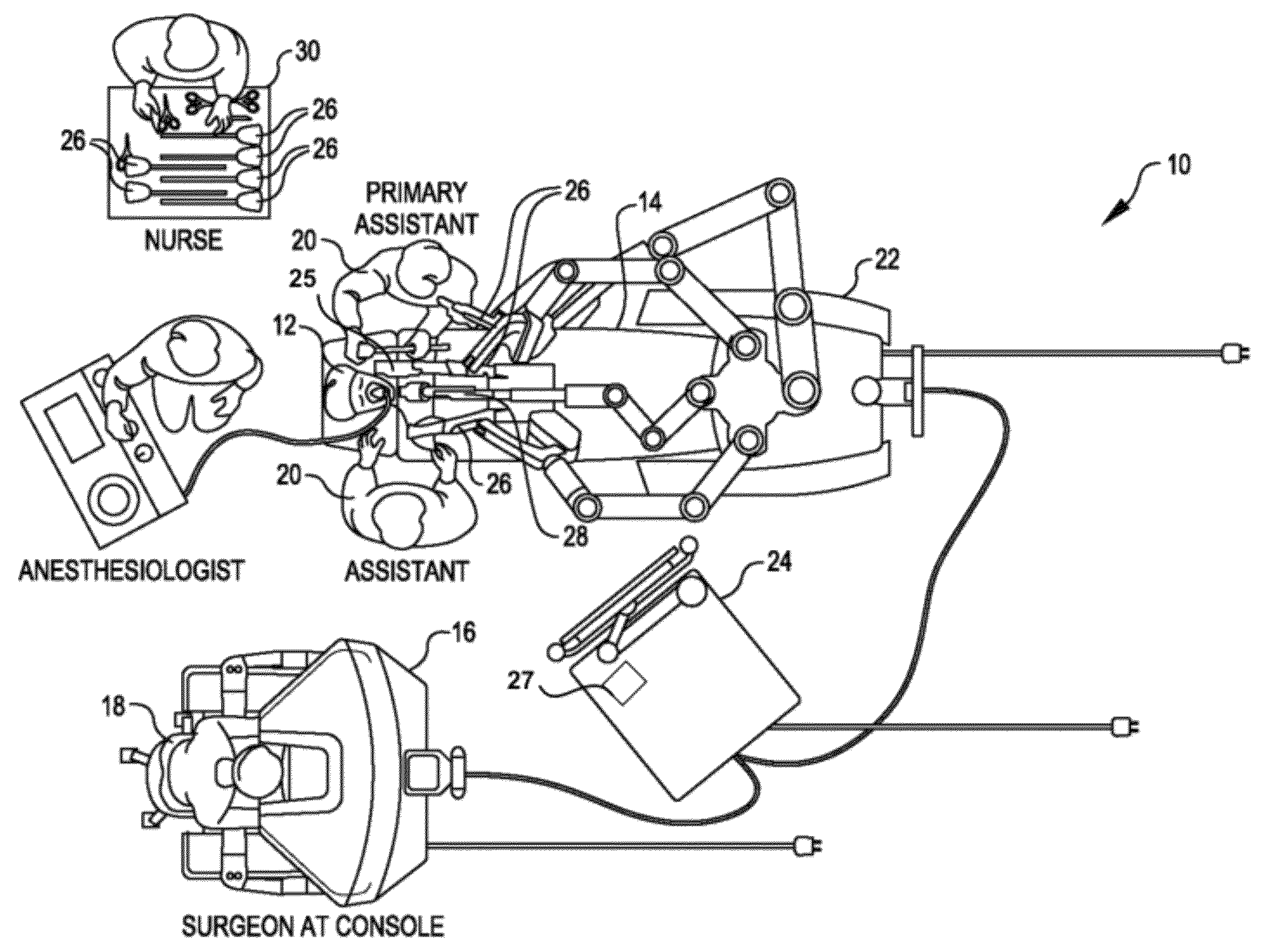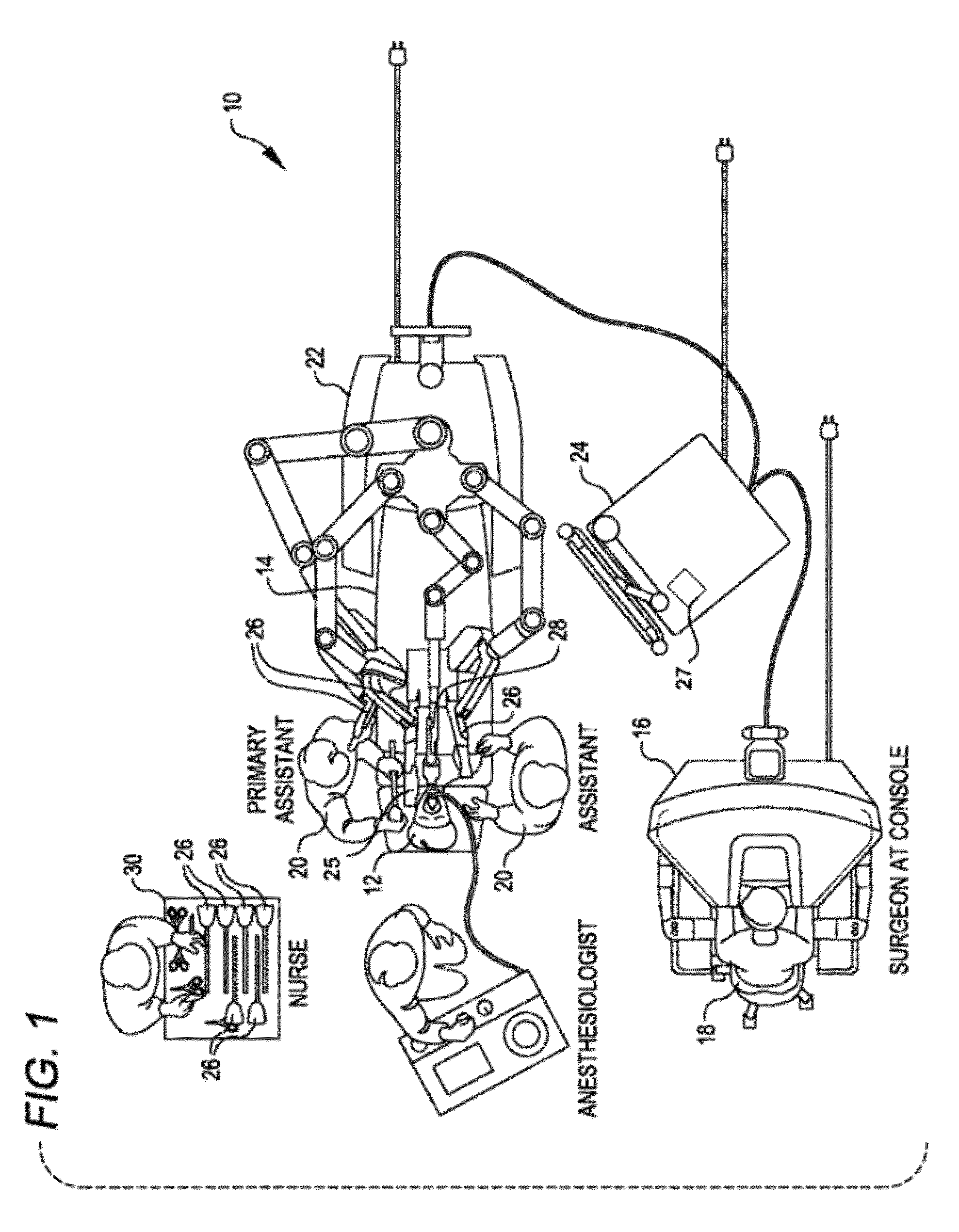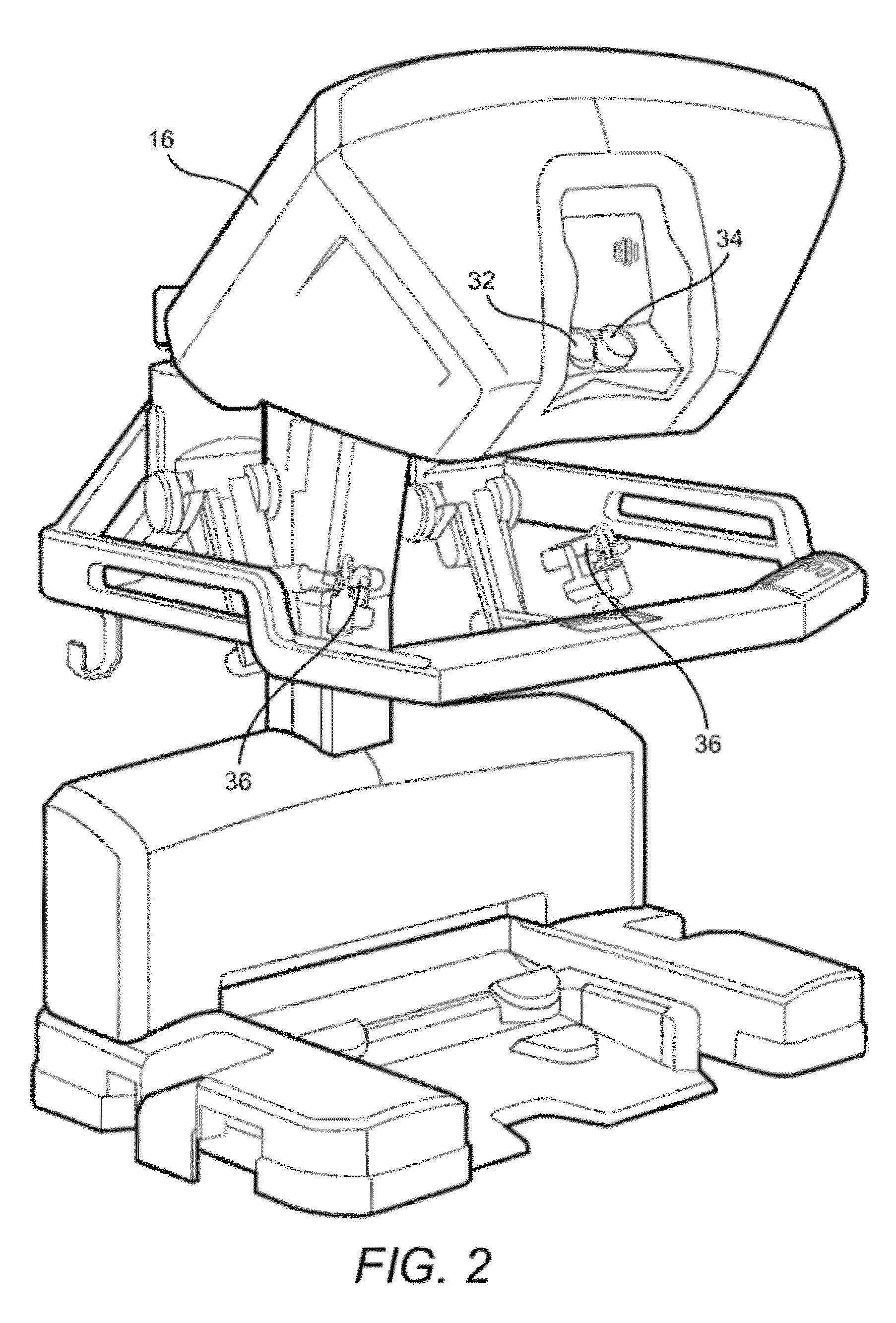Methods and systems for indicating a clamping prediction
a prediction and clamping technology, applied in the direction of surgical staples, programme control, incision instruments, etc., can solve the problems of increasing the difficulty of adapting open surgical clamping devices within minimally invasive settings, and requiring even more challenges. achieve the effect of fast response, low force and higher for
- Summary
- Abstract
- Description
- Claims
- Application Information
AI Technical Summary
Benefits of technology
Problems solved by technology
Method used
Image
Examples
Embodiment Construction
[0047]Improved systems and methods related to clamping of body tissues are provided. The present invention relates to providing an indicator of whether clamping of grasped tissue is likely before attempting to clamp the tissue. The invention may be used in systems having jaw members for clamping a body tissue, particularly in surgical systems used in minimally invasive surgical applications. Typically, systems utilizing the claimed methods have jaws that grasp a body tissue at a low force and subsequently clamp the body tissue at a higher force. Grasping the body tissue at a low force allows a physician to manipulate and position the body tissue between the jaw members without causing damage to the tissue, while clamping at a higher clamping force allows the physician to perform various procedures, such as tissue cutting and sealing or stapling. While the various embodiments disclosed herein are primarily described with regard to surgical applications, these surgical applications ar...
PUM
 Login to View More
Login to View More Abstract
Description
Claims
Application Information
 Login to View More
Login to View More - R&D
- Intellectual Property
- Life Sciences
- Materials
- Tech Scout
- Unparalleled Data Quality
- Higher Quality Content
- 60% Fewer Hallucinations
Browse by: Latest US Patents, China's latest patents, Technical Efficacy Thesaurus, Application Domain, Technology Topic, Popular Technical Reports.
© 2025 PatSnap. All rights reserved.Legal|Privacy policy|Modern Slavery Act Transparency Statement|Sitemap|About US| Contact US: help@patsnap.com



